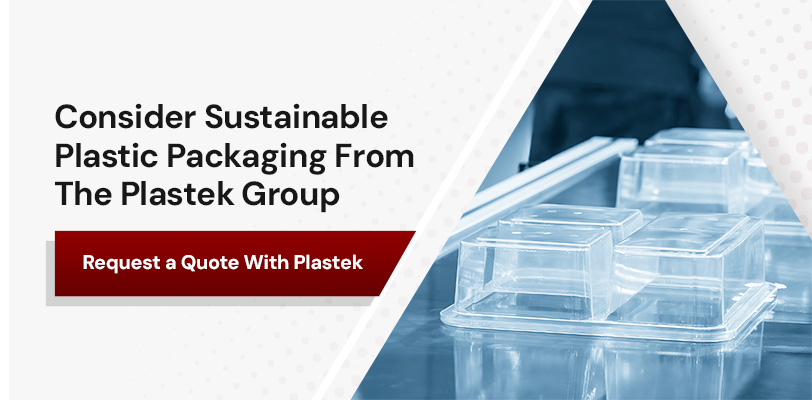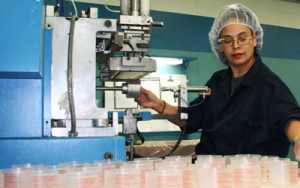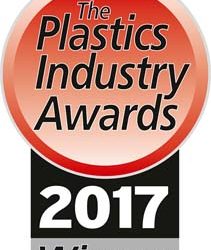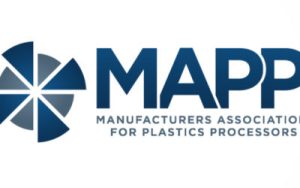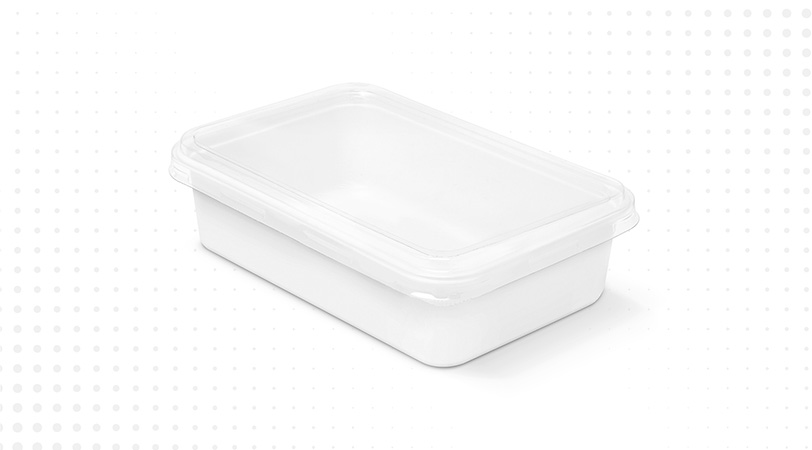
The packaging you choose for your food and beverage products largely affects how long these items stay fresh and whether the contents remain safe with longer use. Proper packaging, depending on the product, should prevent exposure to moisture, air, and light and preserve its quality and freshness.
This makes it important to understand the different types of food packaging materials available, which products they’re best for, and the pros and cons of each. This guide provides key considerations when choosing food-safe packaging materials and explores four different packaging materials for food products.
Important Considerations When Choosing a Material
To ensure you choose the right food packaging materials, consider a few important factors:
- Food Type: Each type of food has a special packaging type that will suit it best. For example, meat or dairy items that need a strong barrier against light and oxygen may benefit most from high-barrier plastics or glass. It also helps to consider the packaging shapes and sizes that will showcase the product best and make storage more efficient.
- Safety Rules and Regulations: Check the local food safety rules that apply to your product. These standards aim to prevent harmful substances from contaminating food. For instance, you may need BPA-free plastic materials to prevent food contamination with infant formula packaging. Some regulations also state that major food allergens must be clearly included on packaging for regulatory compliance.
- Environmental Impact: To minimize your company’s carbon footprint and environmental impact, it’s best to use eco-friendly packaging materials for food that decomposes naturally. Some options include bio-based materials and compostable plastics. You can also use easily recyclable materials for food packaging, helping minimize waste while reducing the demand for new raw materials.
Types of Food Packaging Materials
Let’s explore some of the best food packaging materials, their use cases, and their advantages and disadvantages.
1. Plastics
Different types of plastic are suitable for different shaped items and food products. Here are a few popular choices for various products across the food and beverage industry:
- High-Density Polyethylene (HDPE): HDPE is a durable type of plastic that is resistant to chemicals and moisture. It is commonly used as a juice container and to hold syrups. This recyclable material is also heat-resistant and safe for use with food and drinks.
- Low-Density Polyethylene (LDPE): LDPE packaging incorporates a thinner and more flexible design. It is popular for beverage cartons, and its simple structure makes it more cost-effective. This packaging type is also convenient for frozen foods as a BPA-free material.
- Polyethylene Terephthalate (PET): This commonly used food packaging material is typically transparent, lightweight, and strong. You’ll often see it in grocery stores as packaging for fruits like strawberries and cherry tomatoes. The material is used as food packaging for visually appealing cuisines like cakes, salads, and bread as well. It is a recyclable packaging for drinks and effectively keeps the carbon dioxide in carbonated beverages from escaping.
- Polypropylene (PP): This material is heat-resistant, making it an ideal packaging and storage option for hot items or food that needs to be heated. It allows for mild bending and retains its strength and shape.
The above plastic food packaging materials have many benefits:
- Resistance to chemicals and moisture
- Durable and lightweight
- Suitable for dry and wet food products
- Easily customizable
- Some plastic may allow for direct labeling
- Cost-effective
Some cons of plastic materials include:
- Some types of plastic may release harmful chemicals when exposed to a certain degree of sunlight or heat.
- Some plastics may not be biodegradable or may be more challenging to recycle.
2. Glass
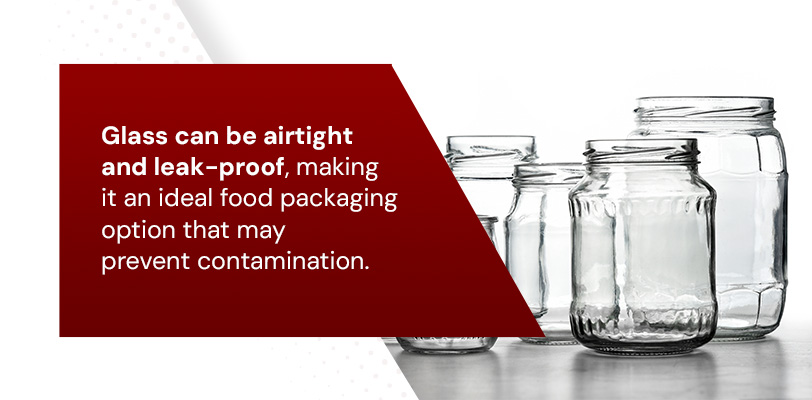
Glass is a 100% recyclable material that doesn’t degrade or lose its quality over time. Because glass can be airtight and leak-proof, it is an ideal food packaging option that may prevent contamination. The material can also give packaging a premium look that makes it suitable for storing jams, beverages, oils, and sauces. Still, glass is more energy-intensive to manufacture than other materials, which may make it more costly to produce.
Some of the pros of glass packaging include:
- Retains the quality and taste of food products.
- Completely recyclable.
- Does not leak harmful chemicals into the food.
The most prominent disadvantages of glass as a food product packaging include:
- It is heavier than plastic, meaning shipping and transportation costs may be higher.
- Glass is fragile and easy to break. Companies using glass packaging may need to add extra protection to prevent breakage during transportation.
3. Metal
Metal can be a desirable food packaging option for beverages, preserved foods, and canned vegetables. Its airtight sealing properties and durability help foods last longer. There are three main types of metal used in food packaging:
- Tin: While pure tin corrodes when in direct contact with food, it is usually coated in protective layers to meet the safety standards for packaging food items.
- Steel: Steel sheets may sometimes be used to make metal cans, containers, and caps.
- Aluminum: Aluminum foil and laminated aluminum cans are often used as packaging to preserve food.
The top four pros of metal food packaging materials include:
- Pest-resistant.
- Prevents air contamination.
- Moisture-resistant.
- Recyclable.
The disadvantages of metal packaging materials include:
- Some metals may react negatively to certain items, such as acidic foods.
- It can be a costly packaging method.
- Aluminum is prone to corrosion without protective layers.
4. Wood Derivatives
Wood packaging is less commonly used in the food industry than its derivative, cardboard, but both are worth mentioning. Wood packaging is typically used for artisanal foods and specialty products, like specially arranged fruit or vegetable gift parcels. Wood may be suitable in these situations to provide fresh products with proper ventilation. Cardboard can be used as folding cartons or corrugated cardboard boxes to hold food that can be served and eaten immediately since these items don’t last long.
Here are some of the advantages of wood and cardboard:
- Both are biodegradable and eco-friendly.
- Wood may offer effective ventilation, depending on the design.
- Cardboard is a good canvas for displaying product information.
Some disadvantages to keep in mind include:
- Cardboard provides limited protection against odors and gases.
- Wood packaging may be susceptible to pests and moisture without proper treatment.
- Cardboard is easily affected by moisture, making it easy for the packaging and product to be compromised.
Consider Sustainable Plastic Packaging From The Plastek Group
Food packaging types vary widely across the industry based on the items your company sells. From jars and bottles to containers and custom-sealed packages, it’s important to consider whether they’ll offer durability and customizability to individualize your product against competitors.
The Plastek Group manufactures various types of HDPE, LDPE, PP, and PET plastic packaging for the food and beverage industry. Our team of professionals specializes in package research, design, and development to create high-quality and sustainable packaging solutions. We also offer custom plastic injection molding designs to meet the required specifications for your specific product.
To deliver your food products with durable plastic packaging, contact our team to learn more about our packaging solutions or request a quote with Plastek today.
